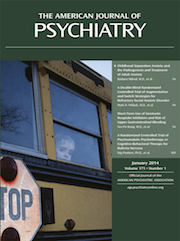The Neural Correlates of Anomalous Habituation to Negative Emotional Pictures in Borderline and Avoidant Personality Disorder Patients
Abstract
Objective
Extreme emotional reactivity is a defining feature of borderline personality disorder, yet the neural-behavioral mechanisms underlying this affective instability are poorly understood. One possible contributor is diminished ability to engage the mechanism of emotional habituation. The authors tested this hypothesis by examining behavioral and neural correlates of habituation in borderline patients, healthy comparison subjects, and a psychopathological comparison group of patients with avoidant personality disorder.
Method
During fMRI scanning, borderline patients, healthy subjects, and avoidant personality disorder patients viewed novel and repeated pictures, providing valence ratings at each presentation. Statistical parametric maps of the contrasts of activation during repeated versus novel negative picture viewing were compared between groups. Psychophysiological interaction analysis was employed to examine functional connectivity differences between groups.
Results
Unlike healthy subjects, neither borderline nor avoidant personality disorder patients exhibited increased activity in the dorsal anterior cingulate cortex when viewing repeated versus novel pictures. This lack of an increase in dorsal anterior cingulate activity was associated with greater affective instability in borderline patients. In addition, borderline and avoidant patients exhibited smaller increases in insula-amygdala functional connectivity than healthy subjects and, unlike healthy subjects, did not show habituation in ratings of the emotional intensity of the images. Borderline patients differed from avoidant patients in insula-ventral anterior cingulate functional connectivity during habituation.
Conclusions
Unlike healthy subjects, borderline patients fail to habituate to negative pictures, and they differ from both healthy subjects and avoidant patients in neural activity during habituation. A failure to effectively engage emotional habituation processes may contribute to affective instability in borderline patients.



